Art of Hosting: Core Techniques
Circle
The circle is probably the most ancient technique of them all.Often underused, can be extremely powerful.
Harvesting
I know some people will be surprised to see harvesting listed as the second core technique. However, I believe we host conversation that matters with a purpose. If the content of those conversations is lost, it seems to me it kind of misses the point. That said, the harvesting does not have to be something very formal, specially if the purpose is limited to the participants to the process. For me, ideally harvesting must be a part of the activity / technique, and flow almost naturally from it and within it.Graphical Harvesting
If you are good at drawing, that is a very nice way to capture the gist of what has been said. In AL parlance, it's "the big picture". Also called Graphic recording or Strategic Illustration, it is done in real time. Does not have to be drawings, it can be words as well.
(or YouTube).Collective Story harvesting (6 Arcs)
For group: each group concentrate on a specific aspect:- calling question,
- assumption,
- discovery
- etc.
Mind Maps
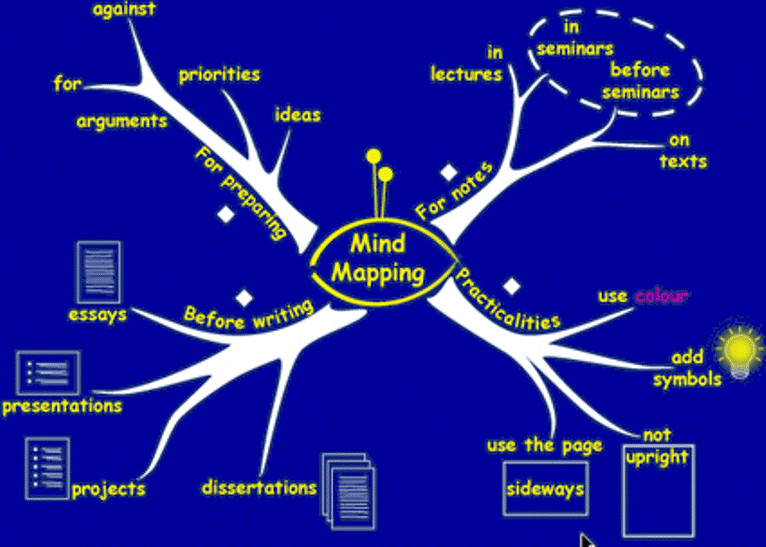 Is the art of drawing a map, either with drawing or word, to express visually the relationship between the concept which have been expressed.
Is the art of drawing a map, either with drawing or word, to express visually the relationship between the concept which have been expressed.
It can be done by hand or with a specialized software.
I use Thinkingspace (for the OST or AI mm below), an Android application which unfortunately no longer exists on Play, replaced by Mindjet. MindmapMemo is a suitable replacement. It exports to Freemind format.
For the iphone, alternatives are MindMeister (Free with limited functionality) or iBlueSky (Commercial by Tenero Software Limited).
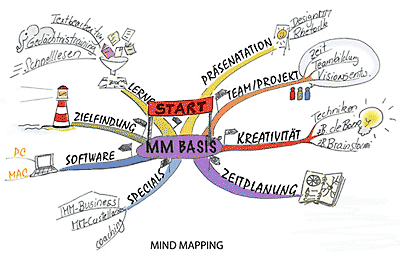 For the desktop, you can use: freemind (my favorite), xmind (not bad either) or mindmaster. All those are free. See the Bag of Treats for more links on MindMapping.
For the desktop, you can use: freemind (my favorite), xmind (not bad either) or mindmaster. All those are free. See the Bag of Treats for more links on MindMapping.
MindMapping can also be done collectively, with people then voting on the various branches.
Notes / Harvesting sheets
Specially with big groups or when time is limited, I like using a single word harvesting. It forces people to really focus on what matters most for them. The resulting cards can then be grouped on a wall, or fed into a wordle generator. This is the (tweaked) wordle result of this page:
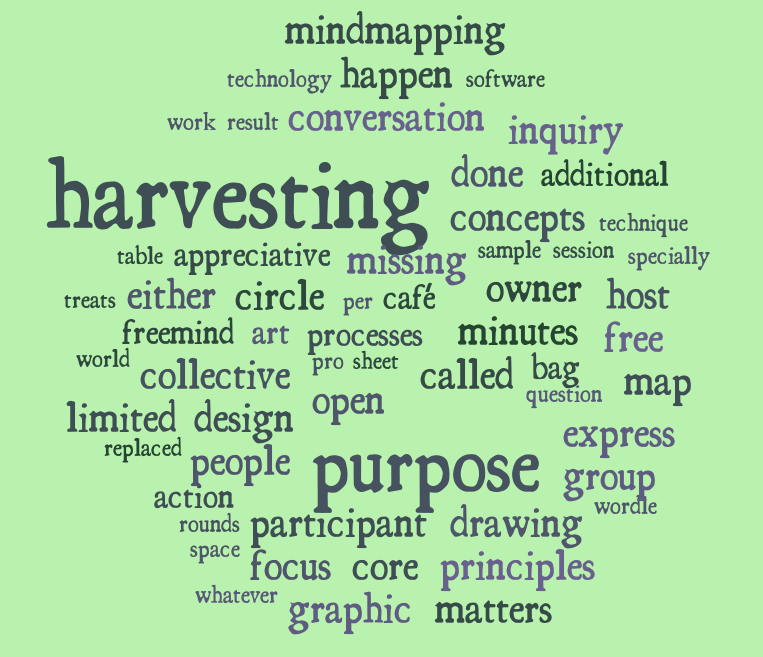
Taking pictures
The said wall can then be photographed for later analysis :-)Slam
Just because I saw Tim Merry doing it. Of course I can't :-)
Insert your pet technique here
Whatever. What matters is that you keep a trace and act on it.
Go to Top
Cafés
World Café
Prepare one or several questions, one per table.
3 rounds of 20 minutes,
people move from table to table,
host stays and explains his/her question and where they are so far.
Host can change next round.
Main idea is to try and link all subjects
Also see
Café à emporter
World caféPro Action Café
Small group, one "projet owner" per group. OST-like session first to define sessions and owners
3 rounds of 20 minutes, people move from table to table (normally max 4)
- what is the quest behind the question
- what is missing
- what is the next elegant step
The Pro Action Café
Go to Top
Go to Top
Open Space technology
Harrison Owen.
Actors:
|
Principles:
|
See also:
Le livre blanc du forum ouvert
Sample harvesting sheet
Sample harvesting sheet
Matrix:
| Time | Place A | Place B | PlaceC |
|---|---|---|---|
| 9-12 | Who What | Sophie Stick a Ted | Edith Your Books |
| 14-17 | Christa Leasing |
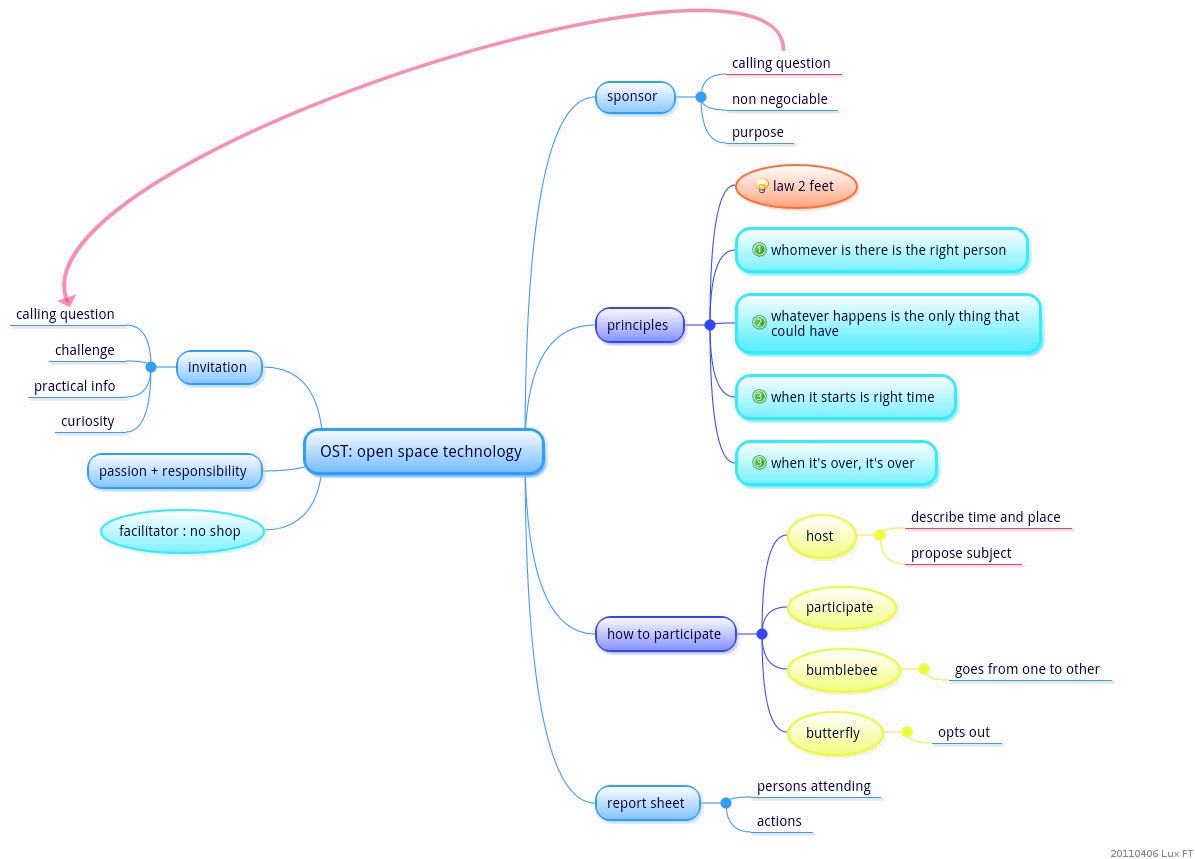
Go to Top
Appreciative Inquiry
Instead of focusing on what goes wrong, focus on what goes right.Two basic principles:
- Look for what works and amplify it
- 4 Ds
- Describe (Discover): The identification of organizational processes that work well.
- Dream: The envisioning of processes that would work well in the future.
- Design: Planning and prioritizing processes that would work well.
- Deploy (Destiny / Deliver): The implementation (execution) of the proposed design.
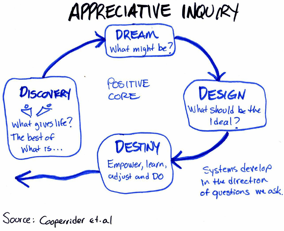


[Sample questions | Sample questions (2)]
[ppt presentation]|pdf presentation]]
Go to Top





